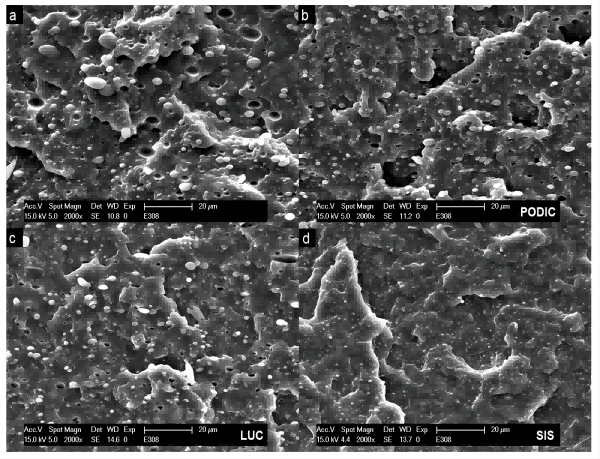An adequate quantity of an antioxidant or anti-aging masterbatch is added to the plastic in order to provide it high weather resistance. Following testing, the test item is exposed to UV light from a xenon lamp for 1000 hours, or one year. The tensile strength and impact strength remain unaffected. 88% and 86%, respectively, are the rates. Impact strength and tensile strength retention rates are 74% and 71%, respectively, whereas the duration of Xenon lamp UV radiation is 3000h, or three years. Long service lives and little environmental contamination from waste plastics are both benefits of plastic's remarkable age resistance.
Applied toughener to PP modification
One of the five general-purpose plastics, polypropylene has limited use in engineering plastics and structural materials due to its substantial molding reduction rate and rapid warping and distortion. The system is strengthened, adjusted, and added calcium carbonate. The composite material may attain a variety of typical mechanical qualities while being less expensive, increasing the range of uses for polypropylene.
1. Calcium carbonate activation
With the growing growth of the composite material sector, toughener producers have discovered that calcium carbonate serves as both a filler and a significant modifier. Calcium carbonate may be added to the polypropylene blending modification method to increase stiffness and heat resistance while lowering the product's cost of raw materials and molding shrinkage ratio.
Calcium carbonate, on the other hand, is an inorganic filler that is compatible with polypropylene. Since the capacity is low, activation treatment is needed before use to strengthen the bonds between the molecular chains of the polymer and the calcium carbonate and to enhance the mechanical qualities of filled polypropylene materials. The producers of tougheners advise employing hefty calcium carbonate with a mesh size of at least 1000. Activate the calcium carbonate by placing it in a high-speed agitator after drying, adding the required amount of phosphate ester coupling agent, and stirring at a high speed for 15 to 20 minutes. Alternatively, use active ground calcium carbonate with a mesh size of 1000 or higher.
The impact strength of the system in the blending system grows fast at initially, increases slowly after 30 parts, and falls after 40 parts as the amount of activated calcium carbonate increases. The coupling agent can increase the impact of the substance by activating the calcium carbonate. Because the activated calcium carbonate particle surface's physical and chemical characteristics have altered and are now simpler to distribute in the matrix, the strength has increased. There will be an aggregation and buildup of inorganic particles when the calcium carbonate content surpasses a particular threshold, making the blending method ineffective. The structure develops internal flaws, which cause a deterioration in a number of mechanical qualities. Consequently, the dosage of calcium carbonate should not exceed 40 parts.
2. How a toughening agent affects the mixing system
In order to give PP superior toughness and outstanding processability, tougheners are utilized.
(2) The chemical structure of the toughening agent, which has high aging resistance, has no unsaturated double bonds.
(3) The toughening agent is fluid and compatible with polyolefins, and it has a narrow molecular weight distribution.
(4) A product's weld line strength and the dispersion impact of fillers can both be enhanced by good fluidity.
The impact strength and elongation at break of the system are significantly increased with the addition of toughener. As can be shown, PP and activated calcium carbonate are compatible with the toughening agent, which also has a good toughening effect on PP. This is due to the narrow molecular weight distribution of the toughening agent and the longer side octyl group than the side ethyl group in the molecular structure, which can form a molecular connection point and function as a connection and buffer between the components, allowing the system to function when it is impacted.
As impact energy is distributed and buffered, there is less chance that stress-induced crazes will turn into fractures, increasing the system's impact resistance.
The network structure generated by these connection sites can experience substantial deformation while the system is under tension, which causes a significant increase in the system's elongation at break. Since the performance of the toughening agent itself determines the tensile strength, flexural strength, and flexural modulus of the system, when the content of the toughening agent increases, the content of the toughening agent should be kept below 20%.












